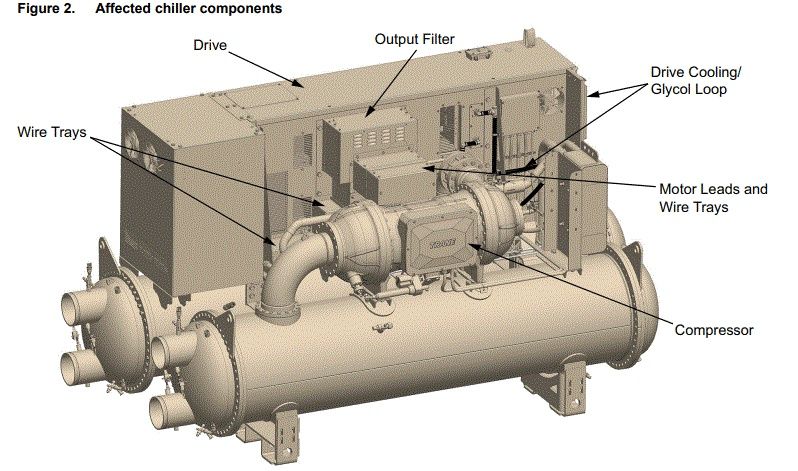Chillers are machines used to remove heat from a liquid or process, typically as part of industrial or commercial cooling systems. These systems play a crucial role in air conditioning, plastic molding, food processing, chemical production, and more. By circulating cooled liquid, chillers help maintain controlled temperatures in facilities, equipment, or manufacturing processes.
There are several types of chillers based on how they operate and the cooling method used, including air-cooled chillers, water-cooled chillers, absorption chillers, and screw chillers. Each type has unique features suited to different environments, energy efficiencies, and scale of operations.

Why Chillers Are Important in Modern Industry
Chillers are essential for industries where temperature control directly impacts product quality, operational safety, and energy consumption. Here's why they matter today:
-
Improved energy efficiency in HVAC systems for commercial buildings.
-
Essential temperature control in industries like plastics, pharmaceuticals, and data centers.
-
Prevent equipment overheating, extending machine life and avoiding downtime.
-
Support food and beverage safety by maintaining controlled cooling during production and storage.
-
Enable environmentally responsible cooling using modern refrigerants and smart controllers.
For building managers, industrial engineers, and manufacturers, selecting the right type of chiller is critical for meeting performance targets and sustainability goals.
Recent Updates in Chiller Technology (2024–2025)
Over the past year, several trends and innovations have reshaped the chiller industry:
-
Integration with smart building systems: Chillers now feature IoT sensors and automated diagnostics for predictive maintenance (2024).
-
Use of low-GWP refrigerants: Manufacturers are shifting from HFCs to eco-friendly alternatives like R-1234yf to meet global climate goals.
-
Variable-speed compressor technology: Helps reduce energy usage in partial-load conditions, especially in commercial buildings.
-
Hybrid chiller systems: Combining air and water cooling methods for better performance in fluctuating climates.
-
Noise reduction features: New sound-insulated and vibration-absorbing models are emerging for noise-sensitive areas like hospitals.
These advancements reflect a broader focus on efficiency, sustainability, and smart control across commercial and industrial sectors.
Regulatory Framework and Policies Affecting Chillers
Chillers are subject to various national and international regulations, mainly due to their environmental impact and energy usage.
Global and Regional Standards:
-
ASHRAE Standards (US): Guidelines for chiller performance and refrigerant use in HVAC systems.
-
F-Gas Regulation (EU): Phasing down high global warming potential refrigerants in favor of low-GWP alternatives.
-
EcoDesign Directive (EU): Sets energy efficiency thresholds for commercial refrigeration units.
In India:
-
Bureau of Energy Efficiency (BEE): Promotes energy-efficient cooling systems through star ratings and labeling.
-
Environmental Protection Rules: Regulate the use of ozone-depleting and high-GWP refrigerants.
-
Smart Cities Mission: Encourages adoption of green cooling technologies in urban planning and infrastructure.
Complying with these standards helps companies reduce operational costs, meet ESG goals, and avoid legal complications.
Helpful Tools, Apps, and Resources for Chiller Management
Selecting, operating, and maintaining a chiller can be simplified with the help of digital tools and expert resources:
Tools and Platforms:
-
Chiller selection software: Many manufacturers like Trane, Carrier, and Daikin offer free online tools to help engineers choose the right chiller based on capacity, application, and ambient temperature.
-
Energy efficiency calculators: Help estimate potential energy savings based on chiller type and load profile.
-
Maintenance checklist templates: Useful for building technicians to conduct routine inspections.
-
IoT dashboards and mobile apps: Allow facility managers to monitor performance, temperature, and energy consumption in real time.
-
Training platforms: Sites like Skill-Lync and Coursera offer online HVAC courses covering chiller operation and maintenance.
Frequently Asked Questions
Q1. What are the main types of chillers?
The most common types are air-cooled chillers, water-cooled chillers, absorption chillers, and screw chillers. Each is suited to different industrial, environmental, and energy requirements.
Q2. What is the difference between air-cooled and water-cooled chillers?
Air-cooled chillers use ambient air to cool the refrigerant, making them ideal for small buildings or locations with limited water supply. Water-cooled chillers use water and require a cooling tower, offering better efficiency in large systems.
Q3. Are modern chillers environmentally friendly?
Yes. Recent models use low-GWP refrigerants and feature energy-saving technologies like variable-speed drives and smart control systems, reducing their environmental impact.
Q4. How often should chillers be maintained?
Routine maintenance, including filter cleaning, leak detection, and performance checks, is recommended quarterly. Annual inspections by certified technicians are also advised.
Q5. Can chillers be used in residential settings?
Chillers are generally used in commercial or industrial settings due to their size and capacity. However, small-scale chillers may be used in luxury villas or multi-unit housing projects.
Final Thoughts
Chillers are fundamental to a wide range of industries where precision cooling is essential. Understanding the different types of chillers and their specific applications helps businesses optimize energy usage, reduce operational risks, and ensure compliance with evolving environmental standards.
As technology advances and sustainability becomes a priority, selecting the right chiller is more important than ever. Using the right tools, staying updated with policies, and maintaining regular service routines can help ensure efficiency and longevity in cooling operations.
